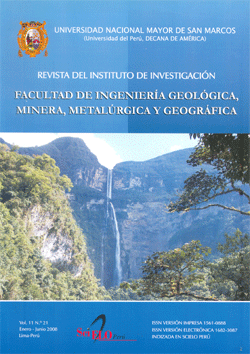Permeability and mechanical resistance of shells ceramics used in the process of precision investment casting
DOI:
https://doi.org/10.15381/iigeo.v11i21.482Keywords:
Precision investment casting, permeability, resistance to flexion (MOR), shells ceramicsAbstract
The process of smelting to the lost wax provides great amount of pieces to the industry, with an excellent superficial completion, reduce dimensional tolerances and quite complex forms. One of the most important stages of the process is the construction of the shells or ceramic molds, since when these do not fulfill the necessary requirements they reveal relatively high indices of failure, that influence directly in the quality of the pieces, thus providing, a great number of products not conform. The present study shows the characterization of the ceramics molds silica-based agglomerates with ethyl silicate, starting off of a experimental design of 22, where is evaluates the permeability and mechanical resistance of the shell (Resistance to flexion MOR), varying the thickness and the drying time. Next identifies the microstructure of green mold, calcined and sintered, using the technique of scanning electron microscopy and finally relates the microstructure obtained with the two properties mentioned.
Downloads
Published
Issue
Section
License
Copyright (c) 2008 María del Pilar Torres Sanabria, Luis Fernando Lozano Gómez

This work is licensed under a Creative Commons Attribution-NonCommercial-ShareAlike 4.0 International License.
AUTHORS RETAIN THEIR RIGHTS:
a. Authors retain their trade mark rights and patent, and also on any process or procedure described in the article.
b. Authors retain their right to share, copy, distribute, perform and publicly communicate their article (eg, to place their article in an institutional repository or publish it in a book), with an acknowledgment of its initial publication in the Rev. Inst. investig. Fac. minas metal cienc. geogr.
c. Authors retain theirs right to make a subsequent publication of their work, to use the article or any part thereof (eg a compilation of his papers, lecture notes, thesis, or a book), always indicating the source of publication (the originator of the work, journal, volume, number and date).






